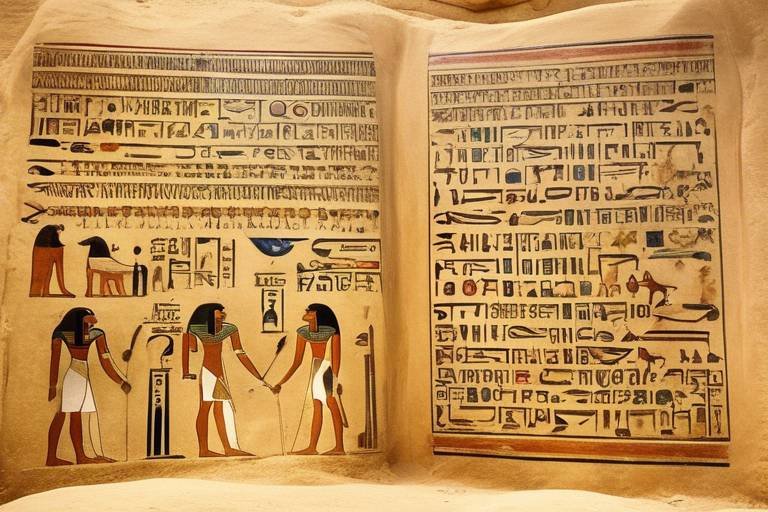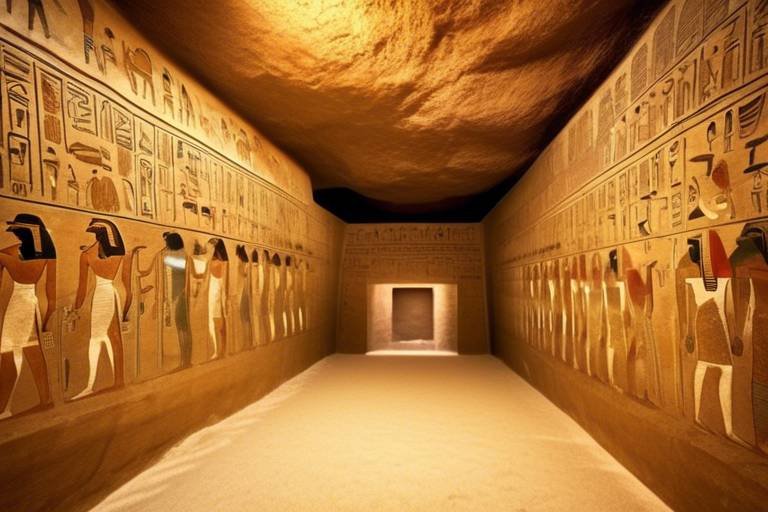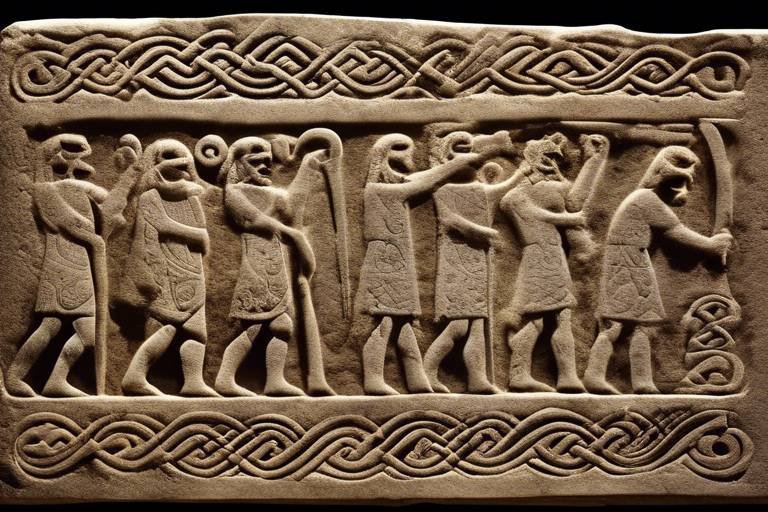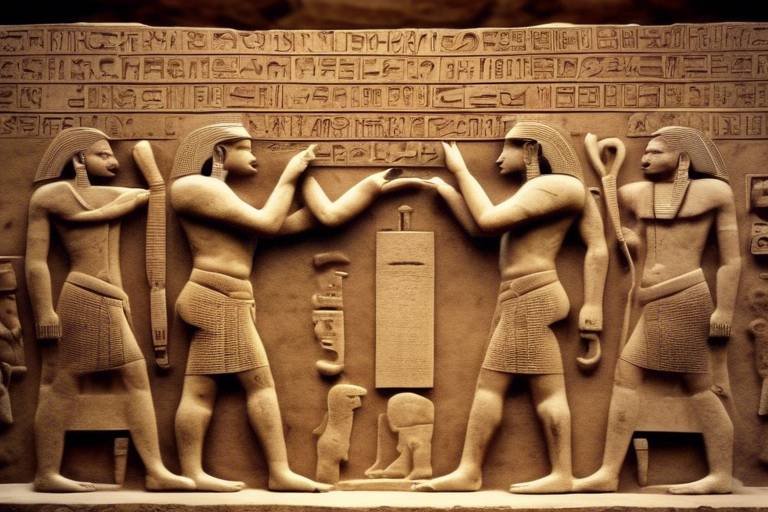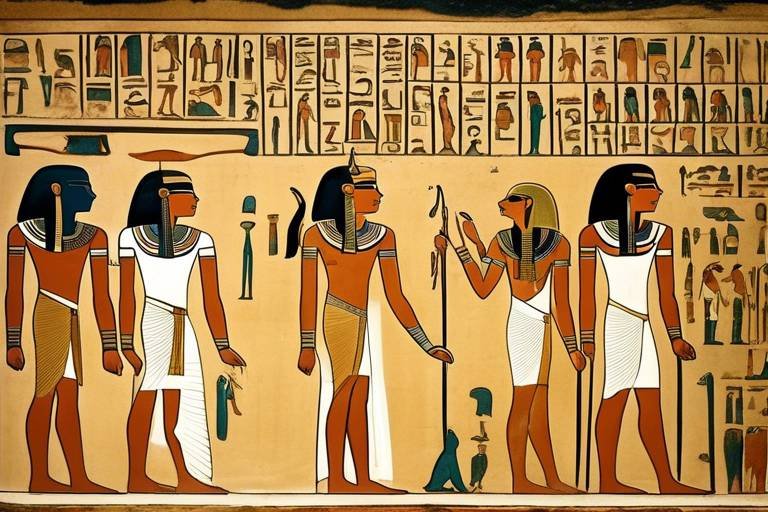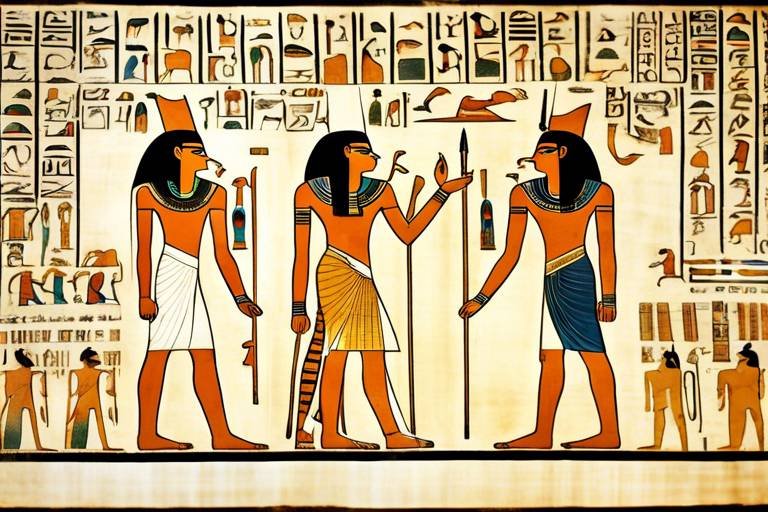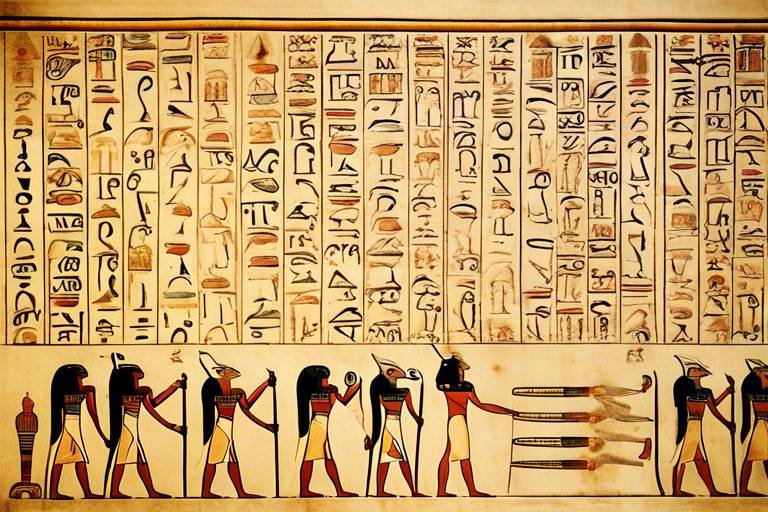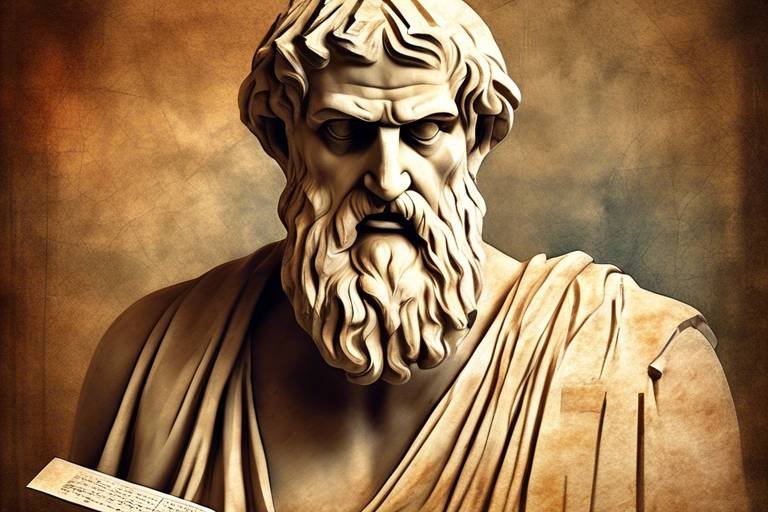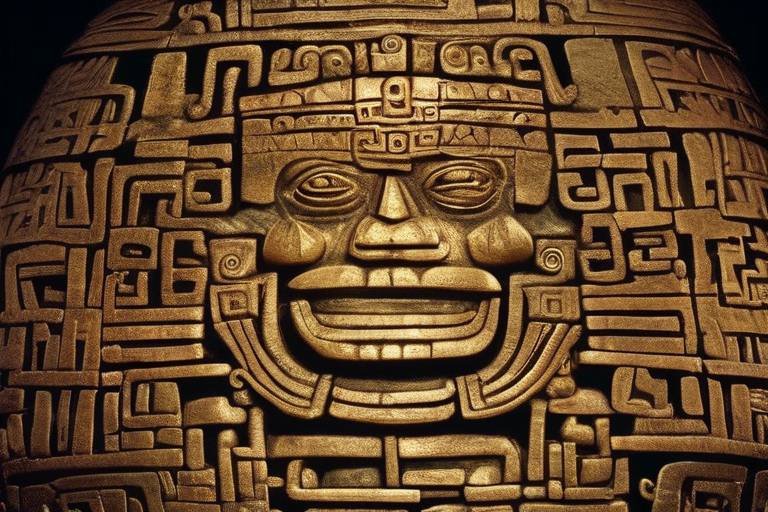The Secrets of the Ancient Egyptians' Understanding of the Cosmos
The ancient Egyptians possessed a profound understanding of the cosmos that transcended mere observation of the stars and planets. Their knowledge was intertwined with their spiritual beliefs, shaping their worldview and influencing every aspect of their society. Exploring the mysteries of the universe, the ancient Egyptians delved deep into the celestial realm, seeking connections between the earthly and the divine.
Through the lens of astronomy, the Egyptians perceived the cosmos as a grand tapestry woven with threads of celestial bodies and spiritual energies. Their culture was steeped in the study of the heavens, with astronomical observations guiding their religious practices, architectural designs, and daily rituals. The alignment of temples and pyramids with celestial events reflected their belief in a harmonious relationship between the earthly realm and the celestial sphere.
Mythology intertwined with astronomy in the Egyptian cosmology, with stories and legends weaving intricate narratives about the stars, planets, and constellations. Each celestial body held symbolic significance, representing gods, goddesses, and cosmic forces that governed the cycles of life and death. The night sky served as a canvas upon which the Egyptians painted their myths, connecting the earthly realm with the divine realm of the gods.
The priesthood played a pivotal role in interpreting celestial phenomena, acting as mediators between the cosmic forces and the people. Priests and priestesses conducted rituals, ceremonies, and observations to maintain cosmic balance and ensure the alignment of the physical and spiritual worlds. Their knowledge of the stars and their movements was considered sacred, a gift from the gods to guide humanity on the path of cosmic harmony.
Symbolism permeated Egyptian art, with intricate representations of celestial bodies, deities, and cosmic energies adorning temples, tombs, and artifacts. Hieroglyphs captured the essence of the cosmos, translating the language of the stars into tangible symbols that conveyed spiritual truths and cosmic mysteries. The art of the ancient Egyptians served as a mirror reflecting the beauty and complexity of the universe.
Divine encounters with celestial beings were central to Egyptian beliefs, with gods and goddesses personifying the forces of nature and the cosmos. Each deity was associated with specific celestial bodies, embodying the powers of creation, destruction, and rebirth. The Egyptians saw themselves as part of a cosmic drama, where the gods and goddesses guided their destinies through the movements of the stars.
The concept of Ma'at, the goddess of truth and cosmic order, governed the balance and harmony of the universe in Egyptian cosmology. Ma'at represented the cosmic principles of justice, balance, and harmony, ensuring that the world remained in equilibrium. The Egyptians believed that upholding Ma'at was essential for maintaining cosmic order and preventing chaos from engulfing the universe.
The legacy of Egyptian cosmology endures to this day, influencing later civilizations and modern astronomy with its profound insights into the mysteries of the cosmos. The ancient Egyptians' understanding of the universe transcended mere observation, delving into the realms of spirituality, mythology, and cosmic harmony. Their legacy serves as a testament to the enduring quest of humanity to unravel the secrets of the cosmos and find our place within the vast expanse of the universe.

Astronomy in Egyptian Culture
Astronomy held a paramount position in the intricate tapestry of ancient Egyptian culture, weaving its threads through the fabric of their religious beliefs, architectural marvels, and daily rituals. The ancient Egyptians viewed the cosmos not merely as a vast expanse of stars and planets but as a divine entity intricately connected to their existence on Earth. Imagine standing in the midst of the desert, gazing up at the night sky, feeling the weight of the universe pressing down upon you, and realizing that every star above held a significance beyond mere twinkling lights.
The celestial bodies were not just distant specks in the sky for the ancient Egyptians; they were deities, manifestations of powerful forces that governed the natural world and influenced human affairs. The movements of the sun, moon, and stars were meticulously observed and recorded, not just for practical purposes such as agriculture or navigation, but as a means to decipher the will of the gods and maintain cosmic harmony. Picture the priests and priestesses, clad in ceremonial robes, standing atop the temple roof, aligning their rituals with the celestial dance unfolding above, seeking to appease the gods and ensure the continuation of Ma'at, the cosmic order.
Egyptian architecture itself was a reflection of their deep connection to the cosmos. The alignment of temples and pyramids with specific astronomical events was not a mere coincidence but a deliberate choice, a symbolic gesture of the union between the earthly realm and the heavens. The Great Pyramid of Giza, with its precise alignment to the cardinal points and its association with the constellation Orion, stands as a testament to the Egyptians' reverence for the stars and their belief in the eternal nature of the cosmos.
Astronomy permeated every aspect of Egyptian life, from the intricate hieroglyphs adorning temple walls to the elaborate rituals performed during celestial events. The night sky was not just a backdrop for their existence but a living tapestry woven with stories of creation, divine battles, and the eternal cycle of life and death. It was a source of wonder, inspiration, and spiritual guidance, guiding the ancient Egyptians on their journey through the mysteries of the cosmos.

Mythological Connections to the Stars
Exploring the profound knowledge and beliefs of the ancient Egyptians regarding the universe, celestial bodies, and their spiritual connection to the cosmos.
Delving into how astronomy played a crucial role in the religious practices, architecture, and daily life of the ancient Egyptians.
The ancient Egyptians intertwined their mythological beliefs with the stars, viewing them as celestial beings guiding their destinies. These myths were not mere stories but profound reflections of their understanding of the cosmos. The stars were not just twinkling lights in the night sky; they were revered as divine entities with the power to influence human lives. Through intricate tales and legends, the Egyptians connected the movements of the stars and planets to the cycles of life, death, and rebirth. Their cosmological beliefs were intricately woven into the fabric of their culture, shaping their rituals, art, and societal structure.
Examining how Egyptian temples, pyramids, and structures were meticulously aligned with astronomical phenomena, such as solstices and equinoxes.
Discussing the significant role of priests and priestesses in interpreting celestial events, conducting rituals, and maintaining cosmic harmony in Egyptian society.
Exploring the intricate symbols and representations of celestial bodies, deities, and cosmic forces in Egyptian art, hieroglyphs, and artifacts.
Exploring the ancient Egyptian beliefs in divine beings, gods, and goddesses who were associated with specific celestial bodies and cosmic phenomena.
Analyzing the concept of Ma'at, the Egyptian goddess of truth and cosmic order, and how it governed the balance and harmony of the universe.
Reflecting on the enduring legacy of the ancient Egyptians' profound understanding of the cosmos and its influence on later civilizations and modern astronomy.

Architectural Alignments with Celestial Events
Exploring the profound knowledge and beliefs of the ancient Egyptians regarding the universe, celestial bodies, and their spiritual connection to the cosmos.
Delving into how astronomy played a crucial role in the religious practices, architecture, and daily life of the ancient Egyptians.
Unraveling the myths and stories that the ancient Egyptians associated with the stars, planets, and constellations in their cosmological beliefs.
Examining how Egyptian temples, pyramids, and structures were meticulously aligned with astronomical phenomena, such as solstices and equinoxes.
Ancient Egyptian architecture was not merely about grandeur and aesthetics; it was a reflection of their deep connection to the cosmos. The alignment of structures with celestial events was a testament to their advanced knowledge of astronomy. Imagine standing in the heart of a temple, where the sun's rays perfectly illuminate a sacred symbol on a specific day of the year, marking an important celestial event. This precise alignment was not a mere coincidence but a deliberate and calculated design, showcasing the Egyptians' reverence for the cosmos.
Discussing the significant role of priests and priestesses in interpreting celestial events, conducting rituals, and maintaining cosmic harmony in Egyptian society.
Exploring the intricate symbols and representations of celestial bodies, deities, and cosmic forces in Egyptian art, hieroglyphs, and artifacts.
Exploring the ancient Egyptian beliefs in divine beings, gods, and goddesses who were associated with specific celestial bodies and cosmic phenomena.
Analyzing the concept of Ma'at, the Egyptian goddess of truth and cosmic order, and how it governed the balance and harmony of the universe.
Reflecting on the enduring legacy of the ancient Egyptians' profound understanding of the cosmos and its influence on later civilizations and modern astronomy.
1. How did the alignment of Egyptian structures with celestial events enhance their religious practices?
2. What role did Ma'at play in maintaining cosmic balance according to Egyptian beliefs?
3. Were there specific deities associated with certain celestial bodies in ancient Egyptian cosmology?

Role of Priesthood in Cosmic Interpretations
Exploring the profound knowledge and beliefs of the ancient Egyptians regarding the universe, celestial bodies, and their spiritual connection to the cosmos.
Delving into how astronomy played a crucial role in the religious practices, architecture, and daily life of the ancient Egyptians.
Unraveling the myths and stories that the ancient Egyptians associated with the stars, planets, and constellations in their cosmological beliefs.
Examining how Egyptian temples, pyramids, and structures were meticulously aligned with astronomical phenomena, such as solstices and equinoxes.
The priesthood in ancient Egypt held a pivotal role in interpreting celestial events and maintaining cosmic harmony. Priests and priestesses were not only religious leaders but also cosmic interpreters, connecting the earthly realm with the celestial sphere. Through their knowledge of astronomy and spiritual practices, they guided the society in understanding the significance of celestial phenomena.
Exploring the intricate symbols and representations of celestial bodies, deities, and cosmic forces in Egyptian art, hieroglyphs, and artifacts.
Exploring the ancient Egyptian beliefs in divine beings, gods, and goddesses who were associated with specific celestial bodies and cosmic phenomena.
Analyzing the concept of Ma'at, the Egyptian goddess of truth and cosmic order, and how it governed the balance and harmony of the universe.
Reflecting on the enduring legacy of the ancient Egyptians' profound understanding of the cosmos and its influence on later civilizations and modern astronomy.
Stay tuned for the frequently asked questions section at the end of this article for more insights and clarifications on the ancient Egyptians' understanding of the cosmos.

Symbols of the Cosmos in Egyptian Art
Exploring the profound knowledge and beliefs of the ancient Egyptians regarding the universe, celestial bodies, and their spiritual connection to the cosmos.
Delving into how astronomy played a crucial role in the religious practices, architecture, and daily life of the ancient Egyptians.
Unraveling the myths and stories that the ancient Egyptians associated with the stars, planets, and constellations in their cosmological beliefs.
Examining how Egyptian temples, pyramids, and structures were meticulously aligned with astronomical phenomena, such as solstices and equinoxes.
Discussing the significant role of priests and priestesses in interpreting celestial events, conducting rituals, and maintaining cosmic harmony in Egyptian society.
Exploring the intricate symbols and representations of celestial bodies, deities, and cosmic forces in Egyptian art, hieroglyphs, and artifacts.
Exploring the ancient Egyptian beliefs in divine beings, gods, and goddesses who were associated with specific celestial bodies and cosmic phenomena.
Analyzing the concept of Ma'at, the Egyptian goddess of truth and cosmic order, and how it governed the balance and harmony of the universe.
Reflecting on the enduring legacy of the ancient Egyptians' profound understanding of the cosmos and its influence on later civilizations and modern astronomy.
Stay tuned for some common questions and answers about the ancient Egyptians' understanding of the cosmos!

Divine Encounters with Celestial Beings
Exploring the profound knowledge and beliefs of the ancient Egyptians regarding the universe, celestial bodies, and their spiritual connection to the cosmos.
When delving into the mystical world of ancient Egyptian cosmology, one cannot ignore the captivating tales of divine encounters with celestial beings. The Egyptians believed in a pantheon of gods and goddesses, each associated with specific celestial bodies and cosmic phenomena. These deities were not distant entities but rather divine beings who interacted with humans, influencing their lives and guiding their destinies.
One of the most revered celestial beings in Egyptian mythology was Ra, the sun god, who traveled across the sky in his solar barque, bringing light and warmth to the world. The Pharaoh was considered the earthly embodiment of Ra, symbolizing the divine connection between the ruler and the sun god. The daily journey of Ra through the heavens was a powerful metaphor for life, death, and rebirth.
Another significant celestial being was Nut, the goddess of the sky, who arched her body over the earth, swallowing the sun at dusk and giving birth to it at dawn. This cyclical journey of Nut represented the eternal cycle of day and night, symbolizing the cosmic balance and harmony that the ancient Egyptians believed governed the universe.
Moreover, the goddess Isis was associated with the star Sirius, the brightest star in the night sky. Isis was revered as the mother goddess, symbolizing fertility, magic, and protection. Her connection to Sirius, known as the "Star of Isis," emphasized her role as a celestial guardian and a source of divine wisdom.
Through rituals, prayers, and offerings, the ancient Egyptians sought to communicate with these celestial beings, seeking their blessings, protection, and guidance in various aspects of life. The temples and tombs were adorned with intricate paintings and hieroglyphs depicting these divine encounters, immortalizing the cosmic connections between the earthly realm and the celestial sphere.

Cosmic Balance and Ma'at
The concept of cosmic balance and Ma'at lies at the core of ancient Egyptian cosmology, embodying the fundamental belief in harmony and order within the universe. Ma'at, represented as the goddess of truth and justice, symbolizes the balance between chaos and order, light and darkness, and life and death. The ancient Egyptians viewed the cosmos as a delicate equilibrium that required constant maintenance to ensure the perpetuation of life and cosmic stability.
Ma'at was not merely a philosophical concept but a guiding principle that governed every aspect of Egyptian society, from the pharaoh's rule to individual behavior. The balance of Ma'at was believed to be essential for the proper functioning of the universe, with cosmic events and natural phenomena reflecting the state of this balance. It was through upholding Ma'at that the ancient Egyptians sought to align themselves with the cosmic forces and divine order of the universe.
In Egyptian art and hieroglyphs, Ma'at is often depicted as a goddess with an ostrich feather on her head, symbolizing truth and justice. The feather of Ma'at was used in the ritual of the Weighing of the Heart, where the heart of the deceased was weighed against the feather to determine their worthiness for the afterlife. This symbolic ritual underscored the importance of living in accordance with Ma'at during one's earthly existence to achieve spiritual harmony in the afterlife.
The principles of Ma'at extended beyond individual morality to encompass the entire cosmos, influencing the Egyptian worldview of the interconnectedness of all things. By maintaining cosmic balance and upholding the ideals of truth, justice, and order, the ancient Egyptians believed they could ensure the prosperity of their civilization and the continuity of the universe.

Legacy of Egyptian Cosmology
Exploring the profound knowledge and beliefs of the ancient Egyptians regarding the universe, celestial bodies, and their spiritual connection to the cosmos.
Delving into how astronomy played a crucial role in the religious practices, architecture, and daily life of the ancient Egyptians.
Unraveling the myths and stories that the ancient Egyptians associated with the stars, planets, and constellations in their cosmological beliefs.
Examining how Egyptian temples, pyramids, and structures were meticulously aligned with astronomical phenomena, such as solstices and equinoxes.
Discussing the significant role of priests and priestesses in interpreting celestial events, conducting rituals, and maintaining cosmic harmony in Egyptian society.
Exploring the intricate symbols and representations of celestial bodies, deities, and cosmic forces in Egyptian art, hieroglyphs, and artifacts.
Exploring the ancient Egyptian beliefs in divine beings, gods, and goddesses who were associated with specific celestial bodies and cosmic phenomena.
Analyzing the concept of Ma'at, the Egyptian goddess of truth and cosmic order, and how it governed the balance and harmony of the universe.
Reflecting on the enduring legacy of the ancient Egyptians' profound understanding of the cosmos and its influence on later civilizations and modern astronomy.
Curious about the mysteries of ancient Egyptian cosmology? Here are some common questions:
- Q: How did ancient Egyptians view the stars and planets?
- Q: What role did astronomy play in Egyptian religious practices?
- Q: How were Egyptian temples aligned with celestial events?
- Q: Who were the key figures responsible for interpreting cosmic phenomena in Egyptian society?
- Q: What significance did symbols of the cosmos hold in Egyptian art?
Frequently Asked Questions
- What role did astronomy play in ancient Egyptian culture?
Astronomy held a significant place in ancient Egyptian culture, influencing religious practices, architectural designs, and daily life. The Egyptians believed that celestial bodies and their movements were linked to the divine and had a profound impact on earthly events.
- How were Egyptian temples and structures aligned with astronomical events?
Egyptian temples and structures were meticulously aligned with astronomical events such as solstices and equinoxes. This alignment showcased the Egyptians' deep understanding of celestial phenomena and their belief in the connection between the earthly and cosmic realms.
- What was the significance of Ma'at in Egyptian cosmology?
Ma'at, the goddess of truth and cosmic order, played a crucial role in Egyptian cosmology. The concept of Ma'at represented balance, harmony, and justice in the universe, emphasizing the importance of maintaining order and upholding cosmic balance.

